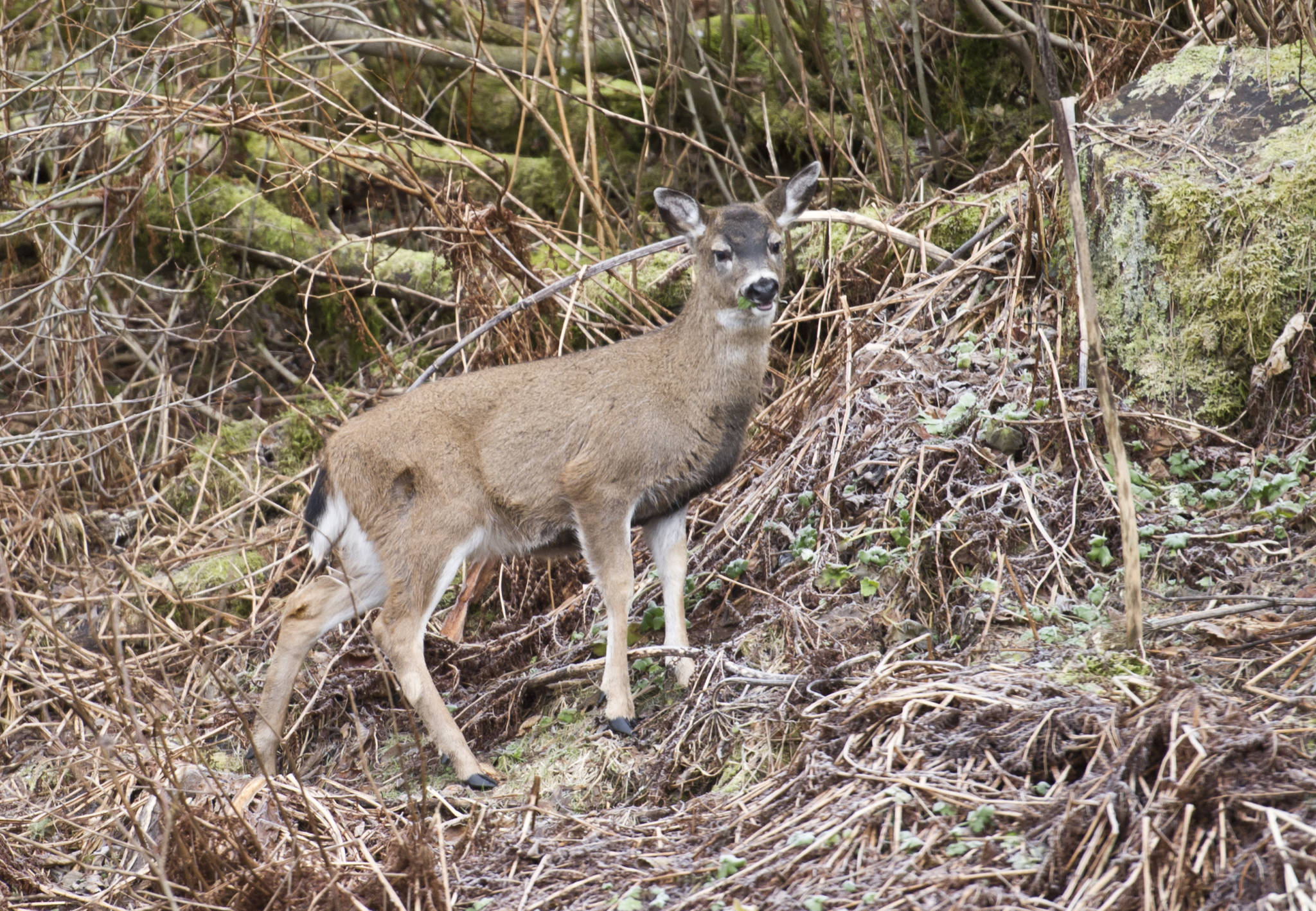The Alaska Department of Fish and Game implemented additional conservation measures for deer on Douglas Island this season, but some hunters say those don’t go far enough.
The Board of Game in January passed Fish and Game’s proposal to limit the amount of does that can be taken. Hunters can still take four deer from the island, but unlike in the past, only one of the four can be a doe. Previously, hunters could take up to four does per season.
The Board of Game also revised the Douglas Island Management Plan, which allows hunters and trappers to now harvest five wolves from the island instead of three. Once five wolves are taken, Fish and Game have the option of closing the season by emergency order.
“We’re hoping that by having a few more does around that, the population will be more resilient and be able to respond to changes in population in a more resilient fashion,” ADFG Juneau Area Biologist Roy Churchwell said.
According to ADFG hunting surveys going back to 1997, the number of deer hunters on the island has been anywhere between 514 and 796 individuals, with the amount of deer harvested anywhere between 114 to 499. Only 525 hunters harvested a total of 174 deer last year, the second- and third-lowest totals in that time period, respectively.
Churchwell said Fish and Game isn’t ready to push the panic button though. The metric for hunter effort — the average annual number of days per harvested deer — has been relatively stable for the last six years. It takes deer hunters on Douglas about eight days to have a successful hunt in that time period, while most hunters average three to four days of hunting, according to ADFG hunting surveys.
“The biggest threat to deer populations is bad winters, and so obviously we don’t have any control over that,” Churchwell said. “That can happen at any time. It’s something that we always want to keep in the back of our minds. If we can have a population that can respond more quickly after a bad winter, for example, a population that had more females in it, then that’s what we would try to manage for.”
“Listening to hunters this year, it sounds like we’ve had unusual weather conditions, and it’s moved or not moved deer around in the normal patterns that hunters are used to,” he added, “and so I feel like some hunters that go their normal place and expect deer to be there. Those deer may or may not be distributed across the island the way they normally have been in the past.”
Two Juneau hunters interviewed by the Empire have a different take on the matter. Dillon Tomaro, 24, and Jesse Ross, 39, both say they believe wolves are to blame for down years like 2018. Tomaro says he’s taken four deer this year but none of them were shot on Douglas.
“I think (Fish and Game) should up the amount of wolves that could be taken and leave it open to buck or doe because it’s already hard enough for everybody who doesn’t have boats to go out and go hunting,” Tomaro said. “So you shouldn’t make it harder on them. It doesn’t make any sense to me why they would put a limit on how many wolves they should take. They should be super supportive of killing every wolf they can on Douglas. It’s obviously put a huge damper on the deer hunting.”
Churchwell said there are user groups for wolves besides just hunters.
“We have to balance between hunters that express that side of things, and there’s also hunters that like to see wolves occasionally, and there’s also non-consumption users that would like to see wolves on Douglas,” he said. “And that’s kind of what initiated the Douglas Island Management Plan.”
Tomaro said he didn’t harbor these concerns until about four years ago.
“In high school, I’d get off (school) and there would be deer everywhere,” he said. “And just now there’s no deer, and I see more and more wolf signs everywhere I hunt. I was just there last weekend up in alpine and there was wolf scat everywhere and no deer.”
Ross agrees with Tomaro on the perceived problem of allowing the wolf population to grow, although he’s OK with leaving some.
“I’m not saying get rid of all of wolves but you have an apex predator out there,” Ross said. “I don’t think people understand the weightiness of that.”
Ross said he proposed getting rid of the Douglas Island Management Plan to the Board of Game.
“Wolves will continue to be wolves and travel back and forth between the mainland and Douglas as they have for many years,” he wrote in his proposal to the Board of Game. “If no change is made, wolves will continue to suppress the deer population on Douglas Island and further decrease the sport hunting and wildlife viewing opportunities.”
Riley Woodford, Information Officer for the ADFG Division of Wildlife Conservation, went hunting last weekend on the mainland.
Even though he didn’t come away with a deer, he saw enough tracks that told him they were around.
“It’s fun for me to hunt when I know there’s lots of deer around and there’s lots of sign because I feel like I’m in it, any second I could see something,” Woodford said. “But where you’re hiking around, especially when you’re in the snow when you don’t see any tracks at all, it’s like, ‘Where are they?’”

